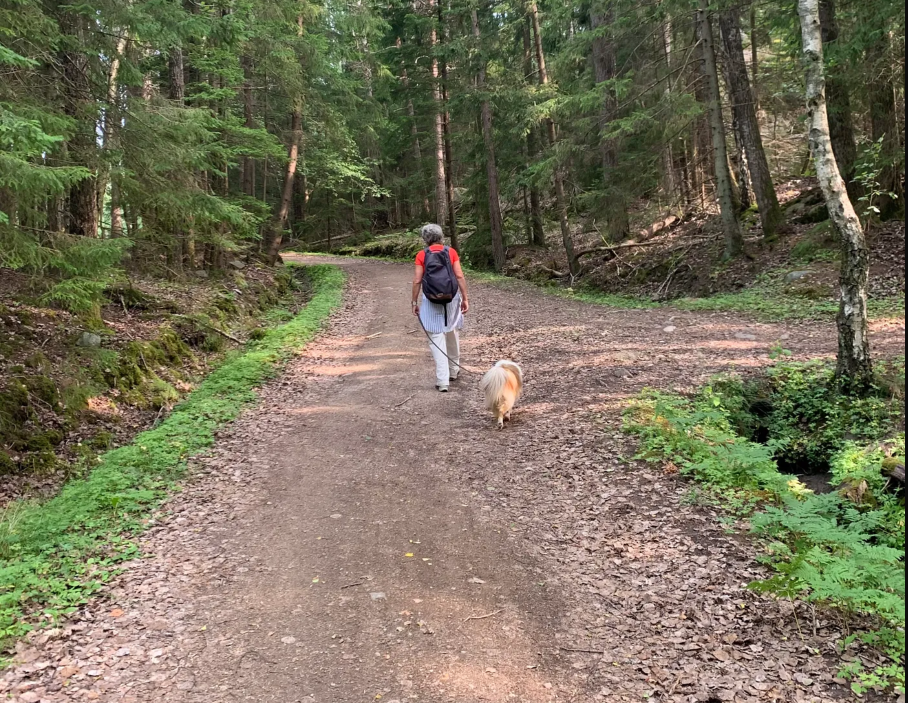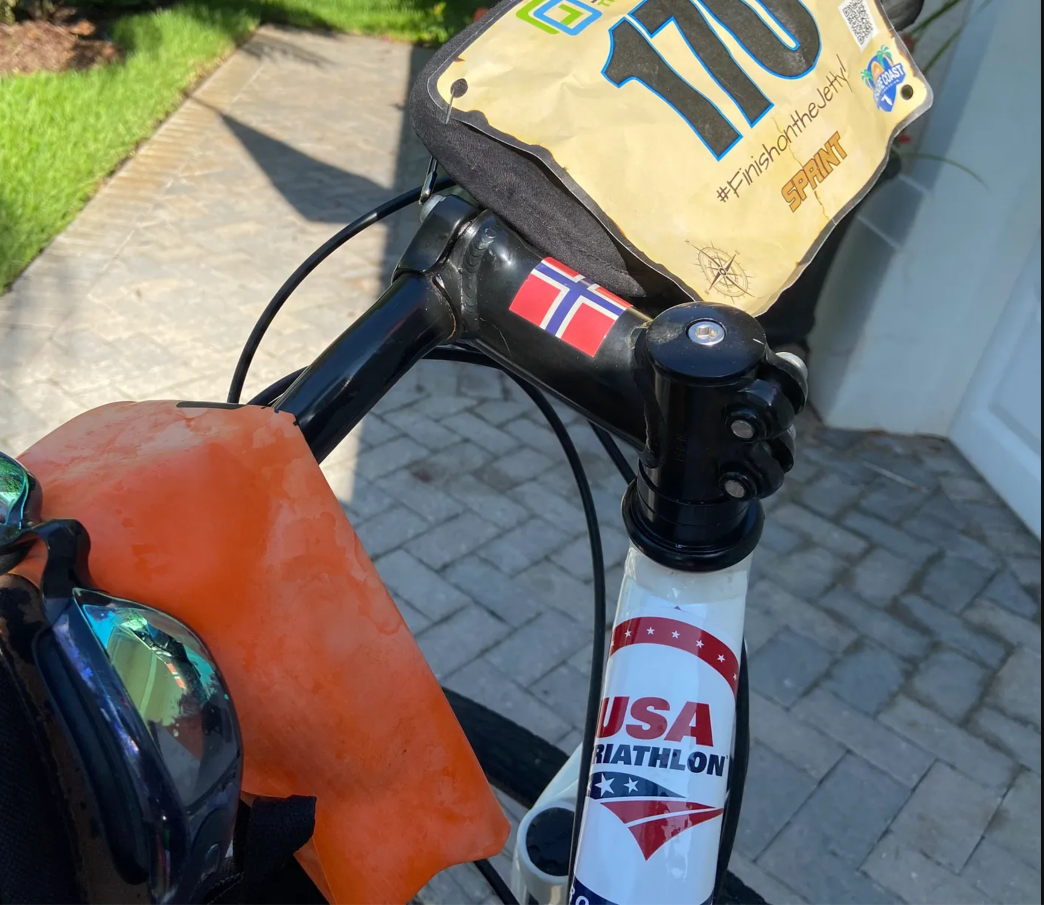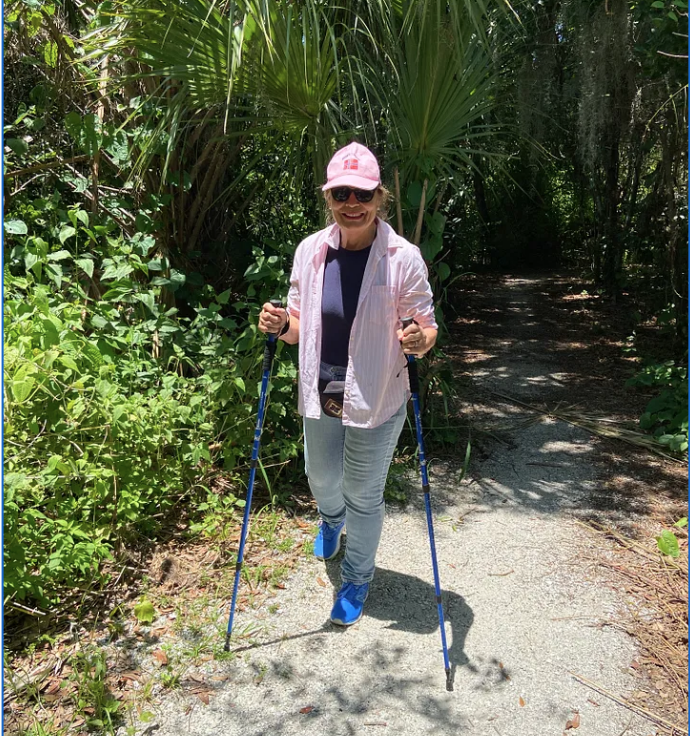When The Foundation Cracks
Saturday, June 8, 2024
Boomers need more than Krazy glue to keep it together.

Author Annelie’s photo, taken by Annelie on a nature walk.
“Remember, only old houses need support”, said my Mom, while she gestured to my young self that I should remove the elbows, supporting my head, from the dinner table.
Last summer I went to visit family and friends in Norway. One morning, staying at my sister’s house, she was running out of eggs. She invited me to walk with her to a farm and buy more.
Excited for the walk ahead, we donned hiking boots and backpacks.
Enjoying the country path and the sweet air of summer, my heart was stirred with treasured memories from my childhood.
Between sand and gravel, the rocky roads had scattered colorful wildflowers. I was in awe of how nature continues to embrace the flora of this blessed land; protecting it from the harsh, cold elements of Norwegian winters.
The sun was shining through the crowns of massive pine and oak trees. And it shone through my favorite birch trees, standing proud with their beautiful white and black trunks. These trees do not grow well in my planting zone in Vero Beach, Florida.
We walked about four miles to the egg farm. Then we walked back home.
That evening, for the first time, I noted a unique kind of aching pain in my right hip.
My sister had no pain.
My sister, who had carried 62 eggs in her backpack on a long hike.
My sister, who had a history of bilateral hip replacement, had no hip pain at all.
Hip replacement can help people with advanced Osteoarthritis (OA)
Osteoarthritis (OA) is the most common joint disease. Worldwide, more than 240 million people are affected. This number includes an estimated 32+ million in the United States.
Mostly due to aging, OA can affect any joint. Hands and feet, knees and hips are mostly involved. Joint dysfunction, pain, and stiffness are due to pathological changes in bone, cartilage, ligament, and, or synovial joints.
Between the pain and the stiffness, OA is the most frequent cause of activity limitations. I got my first taste of the pain that can cause limitations.
“Your hip joint is on the way out,” my sister said.
We sat outside. The sun was setting, and my eyes were resting on the magnificent view of distant fjords and mountains. While enjoying a glass of wine and chatting about everything and nothing, the hip thing was aired.
“That’s how it started with me”, she said. Having been through the whole hip enchilada twice, both left and right total hip replacement, my dear sister was considered an expert on the subject.
I was not concerned.
The pain subsided. I went back to the States and life returned to the status quo ante, sort of.
Once in a while, a sudden excruciating pain would shoot from my groin, through the right leg, and into the right foot. Then it was gone. At times, I also sensed discomfort, deep within the hip. Then it was gone.
I did not pay much attention. It was almost as if the pain was not part of my body. Why would I worry? I was only 73 years old.
My life was still young. I was planning to live healthy, happy, and independent until age 113, when my youngest grandchild turns 50.
Then, I signed up to do a Triathlon on a Sunday in early December.

Photo by Annelie, Author
On the Saturday before the event, I went to the venue, the park where the start and finish took place, to pick up the race packet. My race number was 170. I planned for a smooth transition between the swim, the biking, and the walk/run events, scheduled for the Sprint Triathlon.
Sunday I rose at 4 am.
The morning routine, between coffee and leaving the house, was smooth. I was ready.
My husband drove South from Vero Beach, my adopted home town since retirement in 2016. Suddenly we were hit by extreme fog. The fog was dense and swallowed all visibility. We pulled to the side of the road and waited for clearance before continuing to the venue.
A few minutes before six am, we arrived at the park. The morning was still pitch-black, yet the place was vibrant with cars and people and loud commotion.
We sat in the car, waiting to park. Race participants, wearing Tri suits, carrying bikes, moving in groups, and laughing were obstructing the parking lot. They all seemed so young; so very, very young.
Something felt off.
Something heavy sat in my chest; a feeling of not belonging.
I felt neither excitement nor fear. The hip pain, now absent, was only a dull notion in my mind. I felt nothing except knowing that the moment was not right.
Maybe that knowing was the Universe’s way of sending me a message of caution; preventing a physical disaster.
Maybe denial had run its course.
“I am not doing it,” I suddenly heard myself saying. “I am not doing the triathlon, let’s go home.”
We drove home. I dropped my backpack, wrestled out of the triathlon suit, put on my PJs, and walked over to my desk. On the computer, I clicked on medium.com, I clicked on write a story, and I typed the words:
“The Triathlon I Never Did”
That was all I wrote.
I got up and crawled under my coziest cozy blanket and fell asleep. Somewhere, between regret and relief, my conscious self wanted to get lost and never wake up.
There was a sense of impending dread, a sense of change.
The worry for change was not a worry about possible physical hip repair. Lucky for us, we are not like Humpty Dumpty. When we are broken, most often we can be put back together again. We are Boomers in the Repair Age. Krazy glue, in the form of a hip replacement, would take care of that.
It was me I was worried about, Annelie as I knew her, as I had known myself for 73 years. How would I live if my foundation cracked?

Photo by Kateryna Hliznitsova on Unsplash
The pain in my right hip never disappeared, it became worse. Finally, I made an appointment with an orthopedic surgeon, had physical therapy, and started using bilateral walking poles.
I incorporated the physical changes into my lifestyle. The activity limitation, often called Range of Motion (ROM), forced me to take an honest look at what matters in my life.
We, Boomers and all, we are more than the sum of our parts
Early in my nursing education, I learned about a framework called Integrative Nursing. This framework states that the essence of nursing is to bring the whole patient into focus; the body, the mind, and the spirit.
Since the time of Florence Nightingale, the discipline of nursing has been considered holistic. Patient care includes the whole person, not only the body part that needs repair and healing.
Things have changed over the years, and care has become more fragmented. Between electronic health care records and the nursing shortage, not all patients may report a feeling of being treated holistically.
Yet, at the core of nursing and the core of humanity, people are physical and spiritual beings with a body, a mind, and a spirit.
I love my body, the house in which I live. As the body grows older, it needs more tender loving care.
I love my mind, and having the freedom to choose my thoughts. Our thoughts must be carefully chosen to support positive health beliefs.
I love my spirit, the essence of who I am. This essence makes me, me, and it sets me apart from the 8 billion people that we share the earth with.
That essence is at the seat of who we are; what we do, and how we do it.
Each one of the 700+ million adults over age 65 in the world has a unique ability, an attribute. That attribute is often something they know more about than the average person, something they enjoy doing.
When someone feels compelled to help others, by sharing their attribute, it becomes more than just a unique ability.
It becomes a calling. For me, that means writing about vital health information and sharing experiences with Boomers who are not familiar with health literacy.
For Medium’s writer, Gary Buzzard it is something different. He wrote a beautiful story, How to Find Your Calling. Gary wrote, “A calling connects you with a greater purpose, typically outside yourself.”
Gary’s message is about mindfulness. His message is aimed at helping Boomers and their older and younger sisters and brothers. He does this through writing stories and sharing his own experiences.
The practice of mindfulness and meditation helps us to tune into our internal landscape and become more aware of our spiritual selves. Spirituality can mitigate negative events when Boomers face challenges.

Annelie’s photo, taken by her husband on a nature walk.
Spirituality is more than a buzzword. It improves health and lowers age-related anxiety. This study supports the notion that spirituality is crucial to Boomer’s well-being.
Moving into the silence, cultivating spirituality is something we can all do. You have to decide what works for you. I found a few ways that work for me.
Here are six practices that help me develop spirituality.
1. Early am coffee time with my higher self. Creativity and tranquility meet me at the door of a new day; spirituality at its best.
2. Pray. I tune into gratitude for all the blessings and all the favors that the Universe has given me. When I pray for something I want, I imagine that I already received it. Then I feel gratitude for another favor or another blessing.
3. Gardening. When staying close to the earth, and working with soil and plants, I feel the energy and the spirituality of life and growth. In the garden I feel loaded with heavenly bliss.
4. Meditation. In the year 2008, I realized that patients’ healing was about more than only medicine. I discovered that the power of meditation can produce miracles in all aspects of life. In 2010, I became certified in order to better help my patients and myself. Going into the silence is a beautiful spiritual experience.
5. Spending time in nature. One of the bedrocks in Norwegian culture is spending time in the outdoors; Friluftsliv. Being outside, under an open sky, connects me to the Uni(one)versal oneness; the energy of growth. This is the king’s spirituality
6. Writing. Writing for me is more than a spiritual experience. Writing is also my unique ability and my purpose. Not always, but more often than not, I get lost in the flow. The flow is spiritual.
. . .
During the six months since I typed the headline, The Triathlon I Never Did, into a Medium story draft, I have learned that the crack in my foundation is real. Nothing will change that. I know that repair and Krazy glue are available when and if I need it, for which I am utterly grateful.
But it is not enough. It is not enough to keep me together in a holistic state. I need Spirituality, the matrix that makes the impossible possible and life wondrous.
Spirituality lets this Boomer know that everything is as it should be; that we are all together, and that the best is yet to come.
. . .
🇳🇴Annelie Holmene Pelaez believes that everyone has an attribute to share with others. Promoting cardiovascular health and helping adults over age 65 is her contribution. When we don’t let age define us, but rather empower us to grow, we discover health and happiness are byproducts of who we are.
Annelie is the author of the book, Say Yes to A Better Life, available at Amazon.





